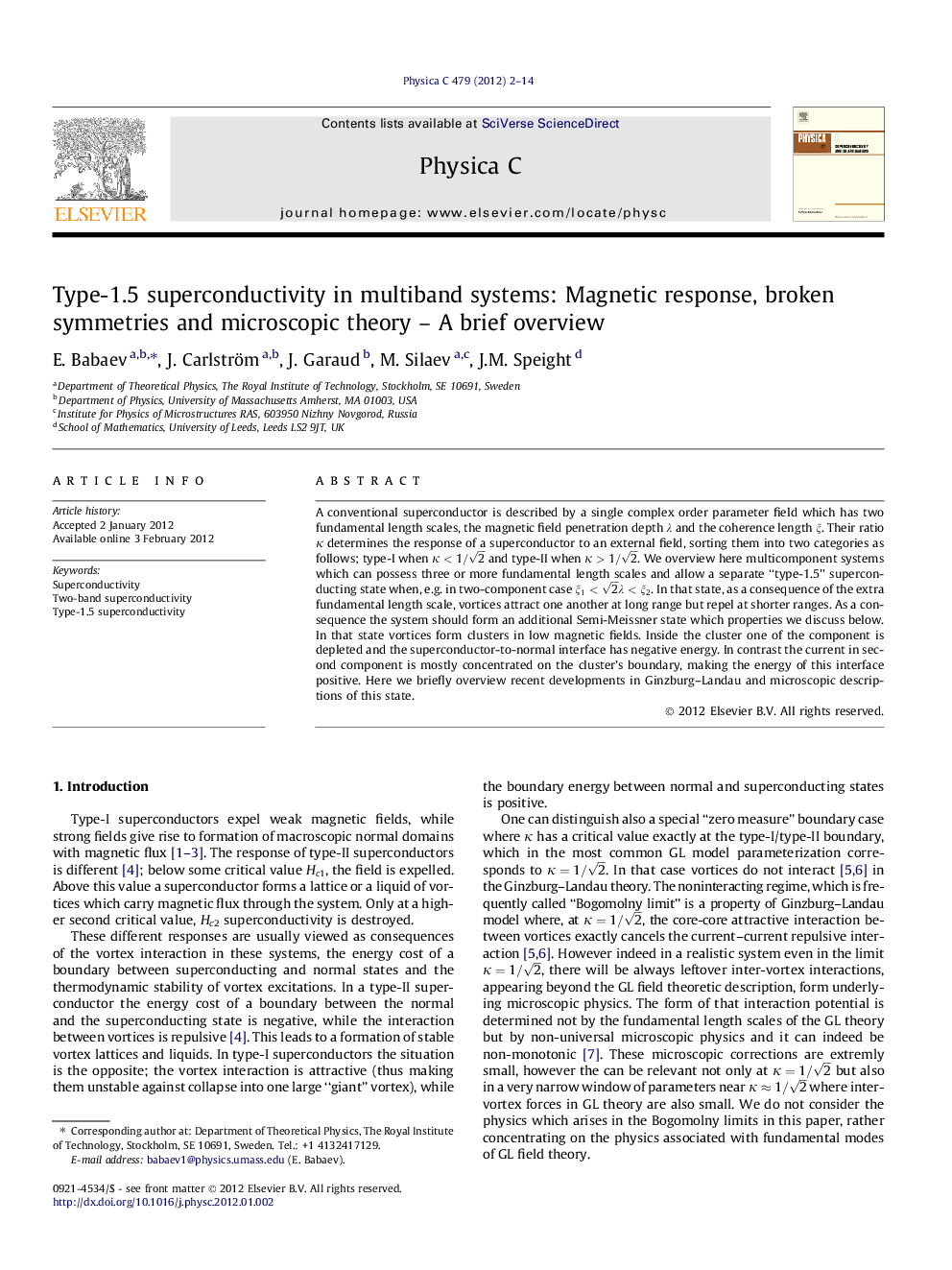| Article ID | Journal | Published Year | Pages | File Type |
|---|---|---|---|---|
| 8165454 | Physica C: Superconductivity and its Applications | 2012 | 13 Pages |
Abstract
A conventional superconductor is described by a single complex order parameter field which has two fundamental length scales, the magnetic field penetration depth λ and the coherence length ξ. Their ratio κ determines the response of a superconductor to an external field, sorting them into two categories as follows; type-I when κ<1/2 and type-II when κ>1/2. We overview here multicomponent systems which can possess three or more fundamental length scales and allow a separate “type-1.5” superconducting state when, e.g. in two-component case ξ1<2λ<ξ2. In that state, as a consequence of the extra fundamental length scale, vortices attract one another at long range but repel at shorter ranges. As a consequence the system should form an additional Semi-Meissner state which properties we discuss below. In that state vortices form clusters in low magnetic fields. Inside the cluster one of the component is depleted and the superconductor-to-normal interface has negative energy. In contrast the current in second component is mostly concentrated on the cluster's boundary, making the energy of this interface positive. Here we briefly overview recent developments in Ginzburg-Landau and microscopic descriptions of this state.
Related Topics
Physical Sciences and Engineering
Physics and Astronomy
Condensed Matter Physics
Authors
E. Babaev, J. Carlström, J. Garaud, M. Silaev, J.M. Speight,
